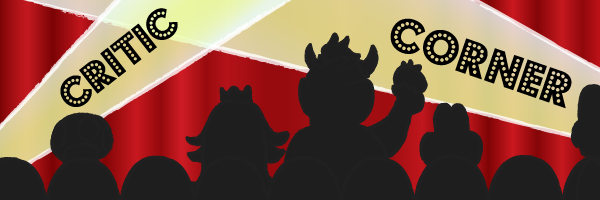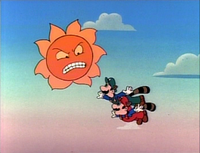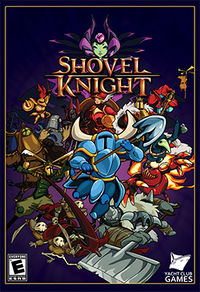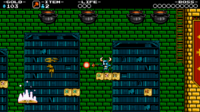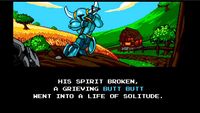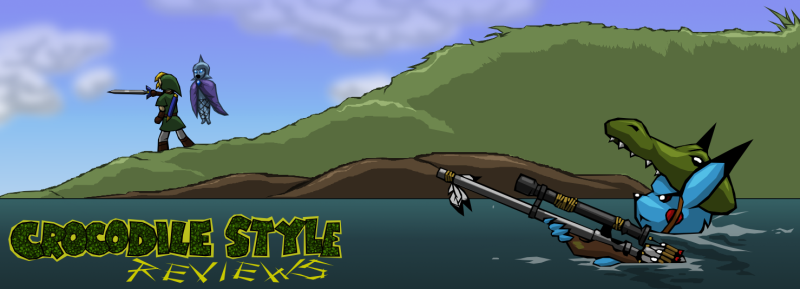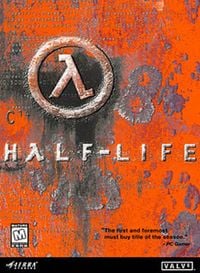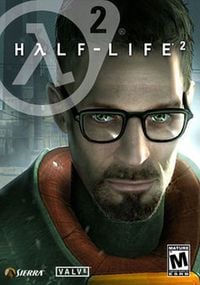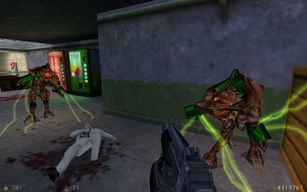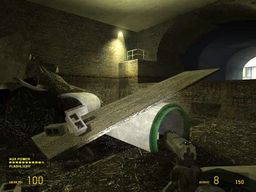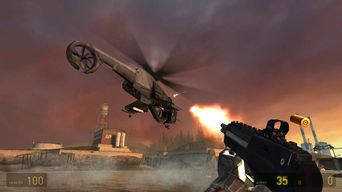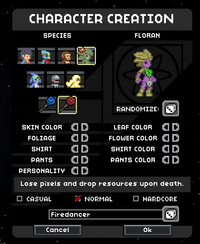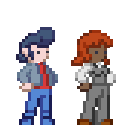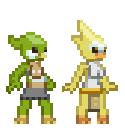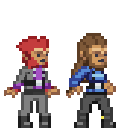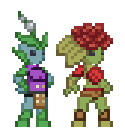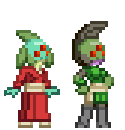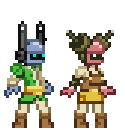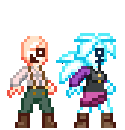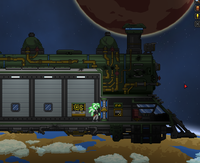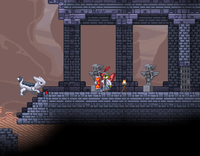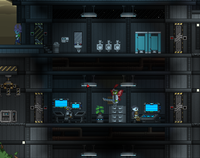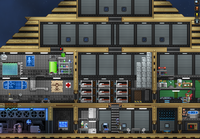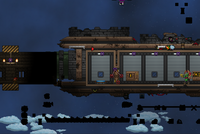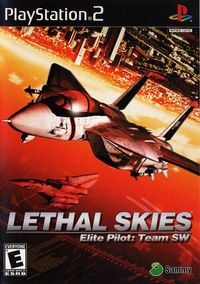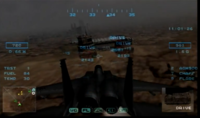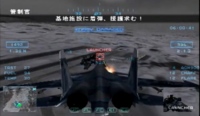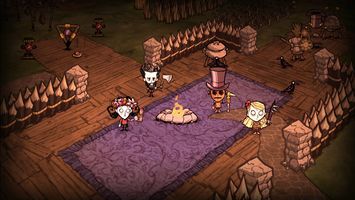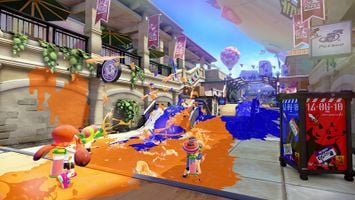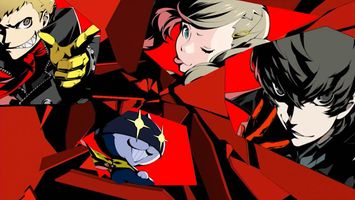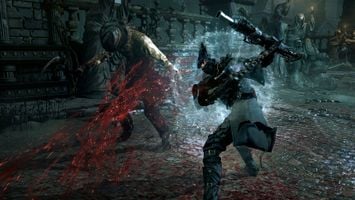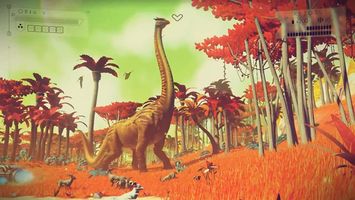The 'Shroom:Issue XCV/Critic Corner: Difference between revisions
(Created page with "__NOEDITSECTION__ __NOTOC__ <div class="shroomwinter">center<includeonly><h2 style="font-family:Kunstler Script;font-size:350%;color:black">Cri...") |
m (Text replacement - "class="shroom(winter|spring|summer|fall)"" to "class="shroombg shroom$1"") |
||
| (10 intermediate revisions by 8 users not shown) | |||
| Line 1: | Line 1: | ||
__NOEDITSECTION__ __NOTOC__ <div class="shroomwinter">[[File:CriticCornerBanner.png|center]]<includeonly><h2 style="font-family:Kunstler Script;font-size:350%;color:black">Critic Corner</h2></div></includeonly> | __NOEDITSECTION__ __NOTOC__ <div class="shroombg shroomwinter">[[File:CriticCornerBanner.png|center]]<includeonly><h2 style="font-family:Kunstler Script;font-size:350%;color:black">Critic Corner</h2></div></includeonly> | ||
<br clear=all> | <br clear=all> | ||
| Line 14: | Line 14: | ||
I’m back from the grave, and ready to bring my baby Critic Corner back to its former glory! I’m not sure what to really say, to be honest; I’m back on ''Crocodile Style Reviews'' to breathe some life into Critic Corner, because what better way to attract the interest of potential writers then to artificially make the sub-team look bustling and exciting? Also, I don’t have any particularly big plans for Critic Corner outside getting some steady content flowing on again, but if you have any suggestions, then <s>piss off</s> hit me up on any of the contacts I have on [[User:Crocodile Dippy|my userpage]]! | I’m back from the grave, and ready to bring my baby Critic Corner back to its former glory! I’m not sure what to really say, to be honest; I’m back on ''Crocodile Style Reviews'' to breathe some life into Critic Corner, because what better way to attract the interest of potential writers then to artificially make the sub-team look bustling and exciting? Also, I don’t have any particularly big plans for Critic Corner outside getting some steady content flowing on again, but if you have any suggestions, then <s>piss off</s> hit me up on any of the contacts I have on [[User:Crocodile Dippy|my userpage]]! | ||
Anyway, to business. I’ve axed {{User|Bloo52}} since he apparently had a history of just not sending his sections in, and we have one-time guest submissions from {{User|Gabumon}} and {{User|Glowsquid}}, who are both wonderful, stand-up guys for doing that. Uhhhh, as are ALL my contributors, ehehe! …If you’re interested in applying for any Critic Corner sections, check for openings on [[The 'Shroom:Sign | Anyway, to business. I’ve axed {{User|Bloo52}} since he apparently had a history of just not sending his sections in, and we have one-time guest submissions from {{User|Gabumon}} and {{User|Glowsquid}}, who are both wonderful, stand-up guys for doing that. Uhhhh, as are ALL my contributors, ehehe! …If you’re interested in applying for any Critic Corner sections, check for openings on [[The 'Shroom:Sign up|the sign up page]] and hit me up on any of the contacts on [[User:Crocodile Dippy|my userpage]]. Now stop listening to me ramble, and read to your hearts content! | ||
===Section of the Month=== | ===Section of the Month=== | ||
This was from before my term, so it doesn’t matter. Next item on the list. | This was from before my term, so it doesn’t matter. Next item on the list. | ||
Oh fine, have it your way. The winner of last month’s Critic Corner Section of the Month was {{User|Yoshi876}} for his '''Character Review''' of the delightfully bizarre enemy [[ | Oh fine, have it your way. The winner of last month’s Critic Corner Section of the Month was {{User|Yoshi876}} for his '''Character Review''' of the delightfully bizarre enemy [[Conkdor]] from ''[[Super Mario 3D World]]'', winning with '''7 votes'''. Obviously, the runner-up was the only other writer, {{User|Pyro}} for his '''Fangame Review''' of ''Mega Man: Revenge of the Fallen'', with '''2 votes'''. Well done, fellas. | ||
And to all y’all readers, don’t forget to vote on your favourite section of this month! Counting on you! | And to all y’all readers, don’t forget to vote on your favourite section of this month! Counting on you! | ||
| Line 34: | Line 34: | ||
}} | }} | ||
|nonmario={{ShroomSectionBox | |nonmario={{ShroomSectionBox | ||
|link=The 'Shroom:Issue XCV/Critic Corner# | |titlestyle=font-size:95% | ||
|link=The 'Shroom:Issue XCV/Critic Corner#Hottest Reviews Around | |||
|linkcolor=blue | |linkcolor=blue | ||
|title=Hottest Reviews Around | |title=Hottest Reviews Around | ||
| Line 86: | Line 87: | ||
<big>Angry Sun</big> | <big>Angry Sun</big> | ||
[[File: | [[File:SMB3 Angry Sun Artwork.jpg|200px|left|thumb|Maybe he’s angry due to their being better quality artwork these days.]] | ||
The Angry Sun is an interesting, albeit scientifically impossible, enemy. If you hadn’t guessed by now it is quite basically a sun that’s quite pissed off <s>because his girlfriend ran off with his best mate</s> for reasons unknown. | The Angry Sun is an interesting, albeit scientifically impossible, enemy. If you hadn’t guessed by now it is quite basically a sun that’s quite pissed off <s>because his girlfriend ran off with his best mate</s> for reasons unknown. | ||
The Angry Sun first appeared in ''[[Super Mario Bros. 3]]'', where it would swoop down in a U-shaped arch, which was kind of a bad tactic… Stand in place, and hey presto it missed you and you can continue on your merry journey. The Angry Sun wasn’t a common enemy to see in the game, as it only appeared in two levels, a desert one and in the final world, which may have a played a part in why it was never seen in a main series game again, as these worlds never came back… oh wait, yes they did… | The Angry Sun first appeared in ''[[Super Mario Bros. 3]]'', where it would swoop down in a U-shaped arch, which was kind of a bad tactic… Stand in place, and hey presto it missed you and you can continue on your merry journey. The Angry Sun wasn’t a common enemy to see in the game, as it only appeared in two levels, a desert one and in the final world, which may have a played a part in why it was never seen in a main series game again, as these worlds never came back… oh wait, yes they did… | ||
[[File: | [[File:SMB3 Show Angry Sun.png|200px|right|thumb|Hey buddy, when am I coming back?]] | ||
There is an issue here; an interesting enemy got the boot from the main series for no discernible reason. World themes shouldn’t be an issue, deserts and Bowser’s world are staples and always appear, and now we have worlds set in the clouds, you’re telling me the sun couldn’t be bothered to show up in the sky? It wasn’t even simple to beat, only hammers and Koopa Shells could destroy it, and seeing as there are enemies harder to kill nowadays the difficulty of the enemy shouldn’t be an issue. And it’s not like it’s too weird either, the series revolves around a fire-breathing turtle kidnapping a princess constantly. | There is an issue here; an interesting enemy got the boot from the main series for no discernible reason. World themes shouldn’t be an issue, deserts and Bowser’s world are staples and always appear, and now we have worlds set in the clouds, you’re telling me the sun couldn’t be bothered to show up in the sky? It wasn’t even simple to beat, only hammers and Koopa Shells could destroy it, and seeing as there are enemies harder to kill nowadays the difficulty of the enemy shouldn’t be an issue. And it’s not like it’s too weird either, the series revolves around a fire-breathing turtle kidnapping a princess constantly. | ||
[[File: | [[File:AngrySunMKW.png|200px|left|thumb|You’d be angry too if you learnt your next appearance would be on a rug.]] | ||
However, the Angry Sun didn’t get the full boot. It made an appearance in the cartoon series, where it got offended by Mario stating that it was in his eyes, sounds kind of like your average teenage youth. It also appeared in the ''Mario Kart'' series as an obstacle, before it got downgraded to a cameo on the Tupperware. Yes, that’s right, the once proud sun that spat [[Fire Snake]]s now appears on fine vases and tapestries for your viewing pleasure. | However, the Angry Sun didn’t get the full boot. It made an appearance in the cartoon series, where it got offended by Mario stating that it was in his eyes, sounds kind of like your average teenage youth. It also appeared in the ''Mario Kart'' series as an obstacle, before it got downgraded to a cameo on the Tupperware. Yes, that’s right, the once proud sun that spat [[Fire Snake]]s now appears on fine vases and tapestries for your viewing pleasure. | ||
| Line 136: | Line 137: | ||
{{User|Crocodile Dippy}} | {{User|Crocodile Dippy}} | ||
[[ | [[File:CrocodileStyleReviews.png|center]] | ||
<div style="float: right"> | <div style="float: right"> | ||
| Line 168: | Line 169: | ||
The first entry into the series was at the tail end of the great PC shooter rave that dominated throughout the 90s, essentially a ''Quake'' mod turned full release with a big NERD as the protagonist instead of a grizzled space marine jock. What distinguished the game from most shooters of its time was that it was strongly focussed on the narrative rather than just “here’s a brown room, it’s full of aliens, and you’ve got a gun, now go nuts”. This is certainly most notable at the beginning, when you spend a good ten minutes just walking around a lab listening to the scientists whinging about how stale the company-provided coffee is. Sorry, I’m getting ahead of myself, aren’t I? | The first entry into the series was at the tail end of the great PC shooter rave that dominated throughout the 90s, essentially a ''Quake'' mod turned full release with a big NERD as the protagonist instead of a grizzled space marine jock. What distinguished the game from most shooters of its time was that it was strongly focussed on the narrative rather than just “here’s a brown room, it’s full of aliens, and you’ve got a gun, now go nuts”. This is certainly most notable at the beginning, when you spend a good ten minutes just walking around a lab listening to the scientists whinging about how stale the company-provided coffee is. Sorry, I’m getting ahead of myself, aren’t I? | ||
[[ | [[File:HalfLifeScreenshot1.jpg|thumb|left|388x192px]] | ||
You are Gordon Freeman, a mute Walter White lookalike working at the Black Mesa research facility, with a PhD in theoretical physics as applied to making zombie crabmen’s skulls explode. You are tasked with performing some anomalous materials research that gets cocked up the bum real quick, opening a dimensional rift into an alien world because what else would it do? Naturally, Gordon is the only one capable of solving the problem, owing to being the only one smart enough to bring a protective suit to the zombie festivities, although his being mute also raises the question of how much he actually wants to be a part of any of this. | You are Gordon Freeman, a mute Walter White lookalike working at the Black Mesa research facility, with a PhD in theoretical physics as applied to making zombie crabmen’s skulls explode. You are tasked with performing some anomalous materials research that gets cocked up the bum real quick, opening a dimensional rift into an alien world because what else would it do? Naturally, Gordon is the only one capable of solving the problem, owing to being the only one smart enough to bring a protective suit to the zombie festivities, although his being mute also raises the question of how much he actually wants to be a part of any of this. | ||
At the centre of this is the core first-person shooter gameplay, starting you out with a crowbar and standard firearms before eventually progressing into guns that shoot bees at people. I’m absolutely serious. The gunplay is superb as you’d expect from something built from ''Quake'', and the game throws enough unique enemies at you at a steady escalating pace to keep you from getting too bored with all the carnage. What was particularly unique for the time was how ''Half-Life'' had a far more tactical approach to the combat than most shooters, as many kinds of enemies will take cover in between fire and attempt to flank you, rather than resorting to the Tazzie devil strat of wildly lunging at something until it’s no longer something anymore. In essence, ''Half-Life'' was probably the first major cover-based shooter in the industry, and ''fuck'' does that leave a sour taste in my mouth when I say it. | At the centre of this is the core first-person shooter gameplay, starting you out with a crowbar and standard firearms before eventually progressing into guns that shoot bees at people. I’m absolutely serious. The gunplay is superb as you’d expect from something built from ''Quake'', and the game throws enough unique enemies at you at a steady escalating pace to keep you from getting too bored with all the carnage. What was particularly unique for the time was how ''Half-Life'' had a far more tactical approach to the combat than most shooters, as many kinds of enemies will take cover in between fire and attempt to flank you, rather than resorting to the Tazzie devil strat of wildly lunging at something until it’s no longer something anymore. In essence, ''Half-Life'' was probably the first major cover-based shooter in the industry, and ''fuck'' does that leave a sour taste in my mouth when I say it. | ||
[[ | [[File:HalfLife2Screenshot1.jpg|thumb|left|388x192px]] | ||
However, ''Half-Life'' was still an old school shooter, and what old school shooter was without everyone’s favourite gaming pastime of '''first-person platforming'''! It was an utterly tedious and needlessly stressful mechanic back then, and time has surely not sweetened it, and the game’s somewhat wonky dash and sneak controls can make precision platforming a disaster when one-eyed cats are hurling plasma furballs at you. Come to think of it, the shooting element does tend to get downplayed a bit more in the latter portions of the game in favour of the platforming, all the way up to the final boss which is an exercise in absolute bloody attrition. Don’t get me wrong, I do still like the game, but some of its mechanics feel rustic and in need of fine tuning – although the Source engine port and the fan-made remake ''Black Mesa'' do cover that niche – and you can probably stop playing at the half-way mark, confident that you’ve already got the best of the game’s offerings under your belt. | However, ''Half-Life'' was still an old school shooter, and what old school shooter was without everyone’s favourite gaming pastime of '''first-person platforming'''! It was an utterly tedious and needlessly stressful mechanic back then, and time has surely not sweetened it, and the game’s somewhat wonky dash and sneak controls can make precision platforming a disaster when one-eyed cats are hurling plasma furballs at you. Come to think of it, the shooting element does tend to get downplayed a bit more in the latter portions of the game in favour of the platforming, all the way up to the final boss which is an exercise in absolute bloody attrition. Don’t get me wrong, I do still like the game, but some of its mechanics feel rustic and in need of fine tuning – although the Source engine port and the fan-made remake ''Black Mesa'' do cover that niche – and you can probably stop playing at the half-way mark, confident that you’ve already got the best of the game’s offerings under your belt. | ||
| Line 180: | Line 181: | ||
You can even employ the gravity gun in combat, either to go full “sick of your shit” mode to push them away or the far cooler alternative of picking up objects around you and flinging them at anything that’s not you. Believe you me; you’ll be making up every excuse you can to fling buzz saws into hordes of screeching headcrab chimps. There’s sometimes a bit of flack thrown at the abundant vehicle sections for controlling like a sled pulled by honey badgers, and there’s some merit to that, but I liked the ''principle'' of the idea since it made the world feel big and more like a global struggle was taking place. | You can even employ the gravity gun in combat, either to go full “sick of your shit” mode to push them away or the far cooler alternative of picking up objects around you and flinging them at anything that’s not you. Believe you me; you’ll be making up every excuse you can to fling buzz saws into hordes of screeching headcrab chimps. There’s sometimes a bit of flack thrown at the abundant vehicle sections for controlling like a sled pulled by honey badgers, and there’s some merit to that, but I liked the ''principle'' of the idea since it made the world feel big and more like a global struggle was taking place. | ||
[[ | [[File:HalfLife2Screenshot2.jpg|thumb|right|388x192px]] | ||
So yeah, solid shooting and fun puzzle solving are all well and good, but what really sets the game apart is its focus on narrative and the sense of pacing it approaches for its storytelling. There’s no cutscenes which keeps the player directly involved in the narrative at all times, a storytelling method I sincerely wish the likes of Hideo Kojima would learn, and the majority of the cast are well-written and possess personalities more complex than the rusty monkey wrench standards of most developers. The game’s drama escalates at a very steady pace, and offers enough downtime to reflect on everything you just blew up, which leaves a clear sense of progression and urgency, providing a genuine impact on the player when the Combine continue to throw curveballs at the resistance. It’s such that by the end of the game, taking down three-legged alien tanks actually feels like a real accomplishment instead of another day in the office. | So yeah, solid shooting and fun puzzle solving are all well and good, but what really sets the game apart is its focus on narrative and the sense of pacing it approaches for its storytelling. There’s no cutscenes which keeps the player directly involved in the narrative at all times, a storytelling method I sincerely wish the likes of Hideo Kojima would learn, and the majority of the cast are well-written and possess personalities more complex than the rusty monkey wrench standards of most developers. The game’s drama escalates at a very steady pace, and offers enough downtime to reflect on everything you just blew up, which leaves a clear sense of progression and urgency, providing a genuine impact on the player when the Combine continue to throw curveballs at the resistance. It’s such that by the end of the game, taking down three-legged alien tanks actually feels like a real accomplishment instead of another day in the office. | ||
| Line 271: | Line 272: | ||
|genre=Air combat | |genre=Air combat | ||
|platform=Playstation 2 | |platform=Playstation 2 | ||
|ratings={{ratings|esrb=E|pegi=7|acb=PG}} | |||
}} | }} | ||
| Line 278: | Line 280: | ||
The series would skip the remainder of the fifth generation before returning in 2000 with a PS2 instalment titled '''''Sidewinder MAX'''''. ''MAX'' retained the real-word setting of the previous instalments, but shifted further toward realism, with the player now having to deal with limited weapon loadouts, blackouts and g-forces. It was followed one year later by '''''Sidewinder F''''' (renamed '''''Lethal Skies Elite Pilot: Team SW''''' in the west), which retained ''MAX'''s mechanics but shifted the setting to a futuristic post-global warming Earth. It was in turn followed by '''''Sidewinder V''''' ('''''Lethal Skies 2''''' in the west) in 2003. | The series would skip the remainder of the fifth generation before returning in 2000 with a PS2 instalment titled '''''Sidewinder MAX'''''. ''MAX'' retained the real-word setting of the previous instalments, but shifted further toward realism, with the player now having to deal with limited weapon loadouts, blackouts and g-forces. It was followed one year later by '''''Sidewinder F''''' (renamed '''''Lethal Skies Elite Pilot: Team SW''''' in the west), which retained ''MAX'''s mechanics but shifted the setting to a futuristic post-global warming Earth. It was in turn followed by '''''Sidewinder V''''' ('''''Lethal Skies 2''''' in the west) in 2003. | ||
Bit Town would then produce another combat flight game for budget publisher D3 as part of its ''Simple 2000'' series, named '''''The Uchuu Daisensou''''' (released in Europe as '''''Space War Attack'''''). Though done on the ''Lethal Skies'' engine, ''Space War | Bit Town would then produce another combat flight game for budget publisher D3 as part of its ''Simple 2000'' series, named '''''The Uchuu Daisensou''''' (released in Europe as '''''Space War Attack'''''). Though done on the ''Lethal Skies'' engine, ''Space War Attack'' traded ''Lethal Skies'' mechanical adversaries for UFOs and giant bugs, similar to D3's own ''Earth Defense Force'' series. | ||
After that, nothing. Bit Town quietly ceased all activities, presumably one of the many casualties of HD development. | After that, nothing. Bit Town quietly ceased all activities, presumably one of the many casualties of HD development. | ||
| Line 289: | Line 291: | ||
It would be very easy for this improbable mixture of simulation and arcade to go wrong, but it forms together in an interesting, and certainly unique, whole. While running out of ammunition is a very real danger, ''Lethal Skies'''s designers reasonably opted to make the missions short and clinical affairs, featuring one clear objective and little in the way of theatrics or scenarisation. Enemy encounters are similarly reserved, the mission favouring one-on-one dogfights against few but reasonably strong and intelligent enemies . ''Lethal Skies'' ends up being a consistently well-paced, white-knuckled affair apart from a few unfortunate boss encounters. | It would be very easy for this improbable mixture of simulation and arcade to go wrong, but it forms together in an interesting, and certainly unique, whole. While running out of ammunition is a very real danger, ''Lethal Skies'''s designers reasonably opted to make the missions short and clinical affairs, featuring one clear objective and little in the way of theatrics or scenarisation. Enemy encounters are similarly reserved, the mission favouring one-on-one dogfights against few but reasonably strong and intelligent enemies . ''Lethal Skies'' ends up being a consistently well-paced, white-knuckled affair apart from a few unfortunate boss encounters. | ||
[[File:lskies screenie2.png|thumb|Barely copy-edited after localization, Lethal Skies features many endearingly goofy engrish mission names like JETROLLER | [[File:lskies screenie2.png|thumb|Barely copy-edited after localization, Lethal Skies features many endearingly goofy engrish mission names like JETROLLER, MISSION OF THE L.A and NOT THERE.]] | ||
Furthermore, prior to starting a mission, you can fully customise not only your plane's loadout, but that of your entire squad, as well as their flight priorities. Though micro-managing your squadron is not mandatory to success, it is a boon when attempting to attain higher grades on missions (a process necessary to unlock a good chunk of the game's plane roster, featuring exotics like the SU-47). Beside the requisite campaign, ''Lethal Skies'' also feature a Free Flight mode and a customizable but somewhat limited dogfight simulator. | Furthermore, prior to starting a mission, you can fully customise not only your plane's loadout, but that of your entire squad, as well as their flight priorities. Though micro-managing your squadron is not mandatory to success, it is a boon when attempting to attain higher grades on missions (a process necessary to unlock a good chunk of the game's plane roster, featuring exotics like the SU-47). Beside the requisite campaign, ''Lethal Skies'' also feature a Free Flight mode and a customizable but somewhat limited dogfight simulator. | ||
The campaign starts with the routine seek-and-destroy, escort missions and canyon runs (two of them, in fact) common to console flight games, but soon starts dipping into stranger – and more interesting- waters. The apocalypse obviously hasn't deterred the military industrial complex, as a quarter of the game's 20 missions will pit you against oversized mechanical monstrosities, such as a wheeled aircraft carrier, or an artillery-cannon equipped spider tank. This type of insanity would normally be the highlight of the game, but the game's realistic flight model doesn't always cooperate with these encounters. One mission requires you to destroy a giant VTOL craft, first by destroy gun batteries on its side and then its four rotors, a simple process made more tedious than challenging by the aircraft's awkwardly fast turning speed and the relative sluggishness of your jet. In another instance, you're required to dismantle the aforementioned spider tank weapon by weapon before striking its underside core, something that will likely require many momentum-killing passes if you only have your gun left. | The campaign starts with the routine seek-and-destroy, escort missions and canyon runs (two of them, in fact) common to console flight games, but soon starts dipping into stranger – and more interesting- waters. The apocalypse obviously hasn't deterred the military industrial complex, as a quarter of the game's 20 missions will pit you against oversized mechanical monstrosities, such as a wheeled aircraft carrier, or an artillery-cannon equipped spider tank. This type of insanity would normally be the highlight of the game, but the game's realistic flight model doesn't always cooperate with these encounters. One mission requires you to destroy a giant VTOL craft, first by destroy gun batteries on its side and then its four rotors, a simple process made more tedious than challenging by the aircraft's awkwardly fast turning speed and the relative sluggishness of your jet. In another instance, you're required to dismantle the aforementioned spider tank weapon by weapon before striking its underside core, something that will likely require many momentum-killing passes if you only have your gun left. | ||
| Line 352: | Line 355: | ||
</table> | </table> | ||
<center> | <center>{{#widget:Crowdsignal|id=8666943}}</center> | ||
<noinclude><center>{{shroomnav2015}}</center>{{Shroomfooter}}</noinclude> | <noinclude><center>{{shroomnav2015|XCV|winter|S1=The 'Shroom Spotlight|M1=Beyond 120 Stars|M2=Retro Feature}}</center>{{Shroomfooter}}</noinclude> | ||
Latest revision as of 22:28, June 18, 2023
Director's NotesAAAAAH! After ten-thousand years, I’m free! Time to CONQUER THE ‘SHROOM! I’m back from the grave, and ready to bring my baby Critic Corner back to its former glory! I’m not sure what to really say, to be honest; I’m back on Crocodile Style Reviews to breathe some life into Critic Corner, because what better way to attract the interest of potential writers then to artificially make the sub-team look bustling and exciting? Also, I don’t have any particularly big plans for Critic Corner outside getting some steady content flowing on again, but if you have any suggestions, then Anyway, to business. I’ve axed Bloo52 (talk) since he apparently had a history of just not sending his sections in, and we have one-time guest submissions from Gabumon (talk) and Glowsquid (talk), who are both wonderful, stand-up guys for doing that. Uhhhh, as are ALL my contributors, ehehe! …If you’re interested in applying for any Critic Corner sections, check for openings on the sign up page and hit me up on any of the contacts on my userpage. Now stop listening to me ramble, and read to your hearts content! Section of the MonthThis was from before my term, so it doesn’t matter. Next item on the list. Oh fine, have it your way. The winner of last month’s Critic Corner Section of the Month was Yoshi876 (talk) for his Character Review of the delightfully bizarre enemy Conkdor from Super Mario 3D World, winning with 7 votes. Obviously, the runner-up was the only other writer, Pyro (talk) for his Fangame Review of Mega Man: Revenge of the Fallen, with 2 votes. Well done, fellas. And to all y’all readers, don’t forget to vote on your favourite section of this month! Counting on you! Mario Reviews
Non-Mario Game Reviews
Grab a shovel and get digging with Pyro’s review of Shovel Knight. [read more] Dippy tries desperately to count to three with a Half-Life retrospective. [read more] Gabumon reaches for the stars in Starbound, lapses in logic and reason be damned. [read more] Opinion Pieces
Non-Game Reviews
|
Character ReviewAngry Sun The Angry Sun is an interesting, albeit scientifically impossible, enemy. If you hadn’t guessed by now it is quite basically a sun that’s quite pissed off The Angry Sun first appeared in Super Mario Bros. 3, where it would swoop down in a U-shaped arch, which was kind of a bad tactic… Stand in place, and hey presto it missed you and you can continue on your merry journey. The Angry Sun wasn’t a common enemy to see in the game, as it only appeared in two levels, a desert one and in the final world, which may have a played a part in why it was never seen in a main series game again, as these worlds never came back… oh wait, yes they did… There is an issue here; an interesting enemy got the boot from the main series for no discernible reason. World themes shouldn’t be an issue, deserts and Bowser’s world are staples and always appear, and now we have worlds set in the clouds, you’re telling me the sun couldn’t be bothered to show up in the sky? It wasn’t even simple to beat, only hammers and Koopa Shells could destroy it, and seeing as there are enemies harder to kill nowadays the difficulty of the enemy shouldn’t be an issue. And it’s not like it’s too weird either, the series revolves around a fire-breathing turtle kidnapping a princess constantly. However, the Angry Sun didn’t get the full boot. It made an appearance in the cartoon series, where it got offended by Mario stating that it was in his eyes, sounds kind of like your average teenage youth. It also appeared in the Mario Kart series as an obstacle, before it got downgraded to a cameo on the Tupperware. Yes, that’s right, the once proud sun that spat Fire Snakes now appears on fine vases and tapestries for your viewing pleasure. What’s more annoying is this Fire Snake power it has now gotten, as that should give it more reason to reappear in the main series. It could be a more annoying version of the Lakitu, and who wouldn’t want that? All in all, the Angry Sun should reappear. Yes, he has no reason to be angry, but with the main series practically screaming for it to come back there’s no reason why it should be resigned to being the face of fine-dining Mario-style.
Hottest Reviews Around
Hey everybody, it's Pyro here with something that isn't Fangame Reviews! This time, I'll be tackling an actually really good game, and you can probably guess that it's Shovel Knight! Shovel Knight is a retraux platformer funded by Kickstarter made by Yacht Club Games. You play as Shovel Knight, who – surprise surprise – is a knight wielding a shovel. You can swing the shovel in front of you to dig up treasure and attack enemies, and you can also use the shovel to pogo-bounce off of enemies ala Ducktales. Along the journey, you can purchase with your gathered gold a multitude of upgrades such as a charge shot and different armors. Let's start with the gameplay itself. The gameplay is simple, but it's really fun. There's nothing overly complex or cryptic here and everything is easily understood. Along with the aforementioned purchasable upgrades and armors, there are "relics", like the special weapons in Mega Man. There are a total of twelve relics, some hidden in the stages, some purchasable in the main town, some both. The relics, if missed in the stage, can be purchased in the town for a higher price, which is a really good idea. The relics themselves are pretty useful - each of them are useful in one situation or another. The Phase Locket allows you to bypass dangerous traps and annoying enemies, the Flare Wand makes you realize how great it is to have a projectile attack, the Chaos Orb can hit bosses a lot for a ton of damage, and so on. The only real complaint I have with them is that some of them take far too much energy to be useful all of the time, even with max magic. The Throwing Anchor, War Horn and some others take too much energy for too little power and so probably won't see much use. However, the majority of the relics are still useful and fun. The level design is pretty good, too. While there are some hiccups and unfair moments, like in Propeller Knight or the Tower of Fate: Ascent, they are few and far between and the level design is overall fair and solid. The fun and fair level design is a pretty big contributor to why I think this game is so damn fun - there's no overly hard, frustrating or unfair thing that wants to make you stop playing, and even the afromentioned hiccups don't hurt your progress. Checkpoints in the stages are abundant, and lives have been thankfully done away with in favor of losing money upon death. You can even retrieve the money you lost if you're good or daring enough. The enemies in the stages are good too. They have quirky and fun designs, such as the pictured propeller mouse and cool ninja-vampire-bat things in the Tower of Fate. Some can get very annoying though if you lack relics, however; the various knights in particular, reminiscent of the Sniper Joes from Mega Man. The bosses themselves are great as well - none of them have easily distinguishable patterns but all have attacks that you can react to if you're good enough. Even if you die a ton against the boss because you haven't learned it yet, you can easily recover your money and try again. One aspect of video games I tend to like is replayability, and Shovel Knight excels in that category. Not only are there the "Wandering Travelers", bosses that roam around on the World Map ala Mario 3, there are some secret bosses such as Mr. Hat and the ghost at the end of the bonus level, the Hall of Champions. There are also a ton of music sheets to find and return to the Bard so you gain money and the ability to listen to those tracks, along with various secret nooks filled with money inside the stages. The game also features a ton of secret cheat codes accessed by naming your file a certain thing that trigger a variety of effects, such as giving you infinite of a relic, turning Shovel Knight's armor a different color, or even replacing key words in the game with "butt". Finally, there's New Game+, which is basically Hard Mode, but you keep your money, health, magic, relics, upgrades and armor from your previous save. Another fantastic thing about this game is the soundtrack. Despite it being 8-bit, it sounds amazing and there are a ton of tracks that are atmospheric, upbeat or catchy. The majority of the tracks were composed by Jake Kaufman, but they actually got the original composer of the first Mega Man game, Manami Matsume, to compose two tracks. Seriously, though, go give the soundtrack a listen. It's amazing. Overall, this game is a must-buy. This game gave me a great time playing it, and I reccommend it to everybody. Until next time, everyone.
Crocodile Style Reviews
Well well well, it’s been quite a while, hasn’t it? Having brought myself back from the grave of personal issues and work-related stresses, I am once more prepared to do everyone’s favourite brutal battering of beloved interactive media! I’m a bit rusty, but hey, I was never good at writing, reviewing, or comedy, so we’re pretty much all set for the year, I think. And what better way to welcome you all to the new age of Crocodile Style Reviews than a review of one of my favourite video game franchises to date; the Cho Aniki series! …I mean, Half-Life, I’m not… that kind of girl… So yeah, most people likely know of Half-Life at this point. The flagship for Valve that’s probably become more remembered as a painful lesson in fanatical devotion to a faceless corporation; if you pour your soul and fanboy tears to them, they will simply brew them into a fine mixed smoothie and use shattered pieces of your broken heart as garnish. But Episode 3's torturous development process aside, Half-Life is still a gloriously well-constructed collection of games that both gun nuts and brats with B.B. guns alike can appreciate. The first entry into the series was at the tail end of the great PC shooter rave that dominated throughout the 90s, essentially a Quake mod turned full release with a big NERD as the protagonist instead of a grizzled space marine jock. What distinguished the game from most shooters of its time was that it was strongly focussed on the narrative rather than just “here’s a brown room, it’s full of aliens, and you’ve got a gun, now go nuts”. This is certainly most notable at the beginning, when you spend a good ten minutes just walking around a lab listening to the scientists whinging about how stale the company-provided coffee is. Sorry, I’m getting ahead of myself, aren’t I? You are Gordon Freeman, a mute Walter White lookalike working at the Black Mesa research facility, with a PhD in theoretical physics as applied to making zombie crabmen’s skulls explode. You are tasked with performing some anomalous materials research that gets cocked up the bum real quick, opening a dimensional rift into an alien world because what else would it do? Naturally, Gordon is the only one capable of solving the problem, owing to being the only one smart enough to bring a protective suit to the zombie festivities, although his being mute also raises the question of how much he actually wants to be a part of any of this. At the centre of this is the core first-person shooter gameplay, starting you out with a crowbar and standard firearms before eventually progressing into guns that shoot bees at people. I’m absolutely serious. The gunplay is superb as you’d expect from something built from Quake, and the game throws enough unique enemies at you at a steady escalating pace to keep you from getting too bored with all the carnage. What was particularly unique for the time was how Half-Life had a far more tactical approach to the combat than most shooters, as many kinds of enemies will take cover in between fire and attempt to flank you, rather than resorting to the Tazzie devil strat of wildly lunging at something until it’s no longer something anymore. In essence, Half-Life was probably the first major cover-based shooter in the industry, and fuck does that leave a sour taste in my mouth when I say it. However, Half-Life was still an old school shooter, and what old school shooter was without everyone’s favourite gaming pastime of first-person platforming! It was an utterly tedious and needlessly stressful mechanic back then, and time has surely not sweetened it, and the game’s somewhat wonky dash and sneak controls can make precision platforming a disaster when one-eyed cats are hurling plasma furballs at you. Come to think of it, the shooting element does tend to get downplayed a bit more in the latter portions of the game in favour of the platforming, all the way up to the final boss which is an exercise in absolute bloody attrition. Don’t get me wrong, I do still like the game, but some of its mechanics feel rustic and in need of fine tuning – although the Source engine port and the fan-made remake Black Mesa do cover that niche – and you can probably stop playing at the half-way mark, confident that you’ve already got the best of the game’s offerings under your belt. It would be another six years before anyone would hear from Mr. Freeman again in Half-Life 2, a game that basically every fucking PC nerd harps on about as the seminal video game of our generation, which might be hyperbolic if the game didn’t come really goddamned close. Taking place roughly 20 years after the Black Mesa incident in the first game whereupon Gordon gets thrown into cryogenic stasis because why the fuck not, he’s brought back into the world to see it’s been taken over by an alien race known as the Combine. After a little conga chase through the city, he meets with the rebel faction who quite literally see him as the second coming of Jesus, and figures that he’s got a pretty sweet deal here so just decides to roll with it. This was Valve’s first game on their Source engine, and was used to play around with all the features the new software had to offer, by which I mean I hope you like physics puzzles, because we’re fucking packing, mate! As tiresome as throwing bricks or a fridge onto a see-saw can get, the puzzles really take a life of their own after the first quarter of the game when you acquire the gravity gun, as there’s something to be said about flinging corpses at a problem to make it go away. The other puzzle is sticking bullets into people until they go away, which still functions really well even if it’s downplayed a bit more from the first game, and has enough varying enemy types and weapons to keep things interesting, particularly the rocket launcher that requires you manually guide the missile to its target to avoid it being shot down. You can even employ the gravity gun in combat, either to go full “sick of your shit” mode to push them away or the far cooler alternative of picking up objects around you and flinging them at anything that’s not you. Believe you me; you’ll be making up every excuse you can to fling buzz saws into hordes of screeching headcrab chimps. There’s sometimes a bit of flack thrown at the abundant vehicle sections for controlling like a sled pulled by honey badgers, and there’s some merit to that, but I liked the principle of the idea since it made the world feel big and more like a global struggle was taking place. So yeah, solid shooting and fun puzzle solving are all well and good, but what really sets the game apart is its focus on narrative and the sense of pacing it approaches for its storytelling. There’s no cutscenes which keeps the player directly involved in the narrative at all times, a storytelling method I sincerely wish the likes of Hideo Kojima would learn, and the majority of the cast are well-written and possess personalities more complex than the rusty monkey wrench standards of most developers. The game’s drama escalates at a very steady pace, and offers enough downtime to reflect on everything you just blew up, which leaves a clear sense of progression and urgency, providing a genuine impact on the player when the Combine continue to throw curveballs at the resistance. It’s such that by the end of the game, taking down three-legged alien tanks actually feels like a real accomplishment instead of another day in the office. But of course, all things must come to an end, not that Valve thinks the same way. It’s often said that you hurt the ones closest to you, and if that’s true, then Half-Life fans will need a road train’s worth of lube for the amount of loving Valve’s been giving. As fantastic a franchise as Half-Life is – and I certainly recommend it to any shooter fans looking for something a bit more inspired than Military Shooter 89: Death to All Brown People – it’s an ultimately unfinished arc that will inevitably leave you wanting more. After a promised episodic trilogy fell short on the whole “tri” part of the word, Valve have continued to be hush hush about any sequel to the still unresolved story of Gordon’s alien punching adventures, perpetuating the age old joke of “Valve can’t count to three” and the reason I still cry myself to sleep at night.
Starbound Review
What is Starbound?Starbound is a video game made by independent developer Chucklefish, currently available in early access. It is most often described as "Terraria in space", although personally I think it is more a case of Terraria meets Mass Effect (in theme at least, the game is not quite as deep). You play the role of a drifter who, through whatever means, acquired a badly damaged space ship and sets out to explore the universe. You collect materials and items from various planets, interact with its inhabitants, repair and upgrade your space ship, and maybe settle down on a planet of your fancy. The game has been in early beta for a good amount of time now and is very infrequently updated. Compared to other early access games, the game is playable and even enjoyable, but it is not a finished product, so players may encounter the occasional bug. Just keep that in mind if you're considering trying this game. StartboundWhen you start the game (which may take several minutes of load time), the first thing you will have to do is create a character you want to play as. You can have multiple characters if you want, but you need at least one to play the game. Apart from selecting your appearance, sex, and name, you may also choose from one of seven playable races, each with their own back-story and lore. This is a purely cosmetic feature though and will not change the way you play the game, since there are no race-specific abilities.
When selecting your race, your options are: After creating your character, you will find yourself on the broken mess that is your spaceship. There you will meet your ship's A.I., the ship-based artificial intelligence lattice, or SAIL for short. SAIL will give you basic instructions and your first mission in the game, which is to mine down to the start planet's core and retrieve 20 core fragments to make your ship mobile again. This is where the comparisons to Terraria begin, as both games have you do things like craft equipment and tools, and mine for precious minerals and ores. Unlike in Terraria however, you will not have to bother with crafting pickaxes for digging or axes for chopping down trees. Pickaxes are in the game, but they are optional and do nothing but increase your digging speed and radius for a while, until they break (which happens jarringly fast, I guess you shouldn't trust in shoddy DIY pickaxes). You main means of mining will most likely be a tool that is permanently attached to your hotbar and can be called with the R button at any time: The Matter Manipulator, a neat piece of technology that digs everything in a 2x2 block radius and never breaks. The Matter Manipulator starts out slow and clunky, but can be upgraded by giving materials to SAIL, which increases its digging speed and radius (up to 4x4 blocks) and allows it to hold all liquids (including lava) in addition to solid materials. The shift away from the pickaxes which usually dominate this genre is a welcome change and makes the game feel more like sci-fi. WarboundWhile exploring planets, you will encounter the local wildlife, which will more often than not be hostile. The creatures you will encounter are randomly generated from a number of various predefined body parts, and given different abilities. Some may attack you with claws, some may try to ram you or jump on you. A few will have some sort of ranged attack, from standard fire or ice breaths to spitting stones to vomiting an avalanche of eyeballs at you. You will have to fight them, either with melee weapons or guns, the latter of which consume energy with every shot, which slowly regenerates when the weapon isn't used. Most monsters drop pixels, which serves as the game's currency and can be used to buy things in stores or utilize your ship's 3D printer to create furniture. You may also occasionally stumble across man-made structures such as apex research labs, human prison colonies, or avian temples, which contain enemies and more loot. To help you with combat and exploration, SAIL may give you access to special skills in exchange for blank tech cards, which can be acquired in various ways. Techs are abilities such as a double jump, the ability to float or regenerate health, or later even the ability to summon a mech or teleport at will. QuesthoundOnce you restore your ship's ability to travel within the solar system, you get access to what is essentially the hub of the game: The Outpost. This location can be reached from every solar system by visiting a large, ominous looking gate. In the hub, you will meet NPCs who sell you items and give you quests. Quests serve two different purposes in the game. The regular ones will reward you with size-upgrades for your ship once you complete a full set. The bigger story missions however give you more crafting options and access to new, more dangerous planets. While the regular quests are just generic filler that requires you to get a specific item from somewhere, the story missions take place in unique environments and require you to explore a dungeon or fight a boss; sometimes a combination of the two. They usually become available after you crafted yourself a full set of armor. Through completing story missions, you will eventually gain access to faster-than-light travel, which enables you to visit other solar systems. Traveling within a solar system is free, but traveling between systems consumes fuel, which can be bought at the Outpost or mined on moons (which is much less expensive). Later you will also get access to protective layers which supply you with oxygen even on planets with non-breathable atmospheres or in water, or protect you from hazards such as radiation or dangerous temperatures. This means the number of planets you can visit grows steadily, until eventually the whole universe is open to you, ready to be conquered, plundered, colonized, or whatever strikes your fancy. Personal impressionsStarbound has come a long way since it started development. It began as a watered-down Terraria clone with a space gimmick, but is slowly moving on from that and establishing its own identity. In its current build, "upbeat giraffe", it is fun to play while you progress through the various crafting tiers, but abruptly grinds to a halt once you reach the end of the ladder. From there on out, you’ll need to find your own amusement and whether the game leaves a positive impression on you or not largely depends on whether you can do that or not. I also commend the ambition of taking the crafting and building genre and trying to introduce role-playing elements to it by fleshing out the universe. Right now the lore that exists doesn't feel like it makes much of an impact however, and just acts as background fluff. I hope the developers will include more dungeon types and maybe even some more handmade, unique environments, such as an avian capital, or an apex city, or maybe even the ruined remnants of planet Earth. I would say "the sky is the limit", but that's a silly statement when discussing a game about space travel. The soundtrack of the game is very well made and includes some very nice songs. Occasionally though, it feels like there is disconnect between the music and what is happening on-screen. It feels very odd to be deep within a dangerous alien planet, surrounded by darkness, and have a serene piano piece accompany me. A song that sounds a bit more driving and haunting would probably fit better. One thing I don't like though is that the planet types seem to have gotten a bit more generic. I don't know if this is just a feeling I personally have, or if others have noticed it as well. Planets of the same type all seem to look largely the same now. Additionally, planets of the same tier now all have similar themes, meaning all high-end planets are lava/wasteland-themed, which is very dull and repetitive. I sincerely hope there will be more variety in themes in the final product. And please bring back the tentacle biome; it seems to have gone missing. BugsThis is something that needs to be addressed. The game is in an early beta stage, so naturally there will be bugs. Some are less severe, like sound clips getting stuck and playing in an infinite loop until you quit and reload the game. Others are dangerous and potentially game-breaking. When I started playing the game, I encountered a bug that crashed my game and deleted my character shortly after getting access to the solar system. The game also occasionally crashes, but the previously mentioned incident happened to me only once so far. A potential fatal crash hazard seems to be the Targeted Blink tech, which allows you to teleport. On rare occasions this tech corrupts your character file, essentially destroying it and forcing you to restart. Use the tech at your own discretion. I will not mince words: This is a buggy game. You may run into infuriating situations and even crashes that delete all of your progress. If you are interested in the game, but cannot handle the fact that things like this can and will happen, you should not buy the game and instead wait for the full release, whenever it will come. For more information about Starbound, you can visit the official website.
Lethal Skies Review
But first, a brief history lesson!Lethal Skies is actually the fourth instalment in a series of low-budget Ace Combat alternatives developed by Bit Town and budgeted by film production outfit Asmik Ace Entertainement. The first game, Sidewinder (retitled Bogey Dead 6 in North America and Raging Skies in Europe) was released in 1996 for the Playstation. A straight clone of Namco's Air Combat, Sidewinder attempted to distinguish itself with superficial realistic stylings and support for the concurrently-released SCPH-1110 analog controller. It would be followed by Sidewinder 2: Let's Dance in the Sky, a fairly conservative sequel released in tandem with Namco's Ace Combat 2. The series would skip the remainder of the fifth generation before returning in 2000 with a PS2 instalment titled Sidewinder MAX. MAX retained the real-word setting of the previous instalments, but shifted further toward realism, with the player now having to deal with limited weapon loadouts, blackouts and g-forces. It was followed one year later by Sidewinder F (renamed Lethal Skies Elite Pilot: Team SW in the west), which retained MAX's mechanics but shifted the setting to a futuristic post-global warming Earth. It was in turn followed by Sidewinder V (Lethal Skies 2 in the west) in 2003. Bit Town would then produce another combat flight game for budget publisher D3 as part of its Simple 2000 series, named The Uchuu Daisensou (released in Europe as Space War Attack). Though done on the Lethal Skies engine, Space War Attack traded Lethal Skies mechanical adversaries for UFOs and giant bugs, similar to D3's own Earth Defense Force series. After that, nothing. Bit Town quietly ceased all activities, presumably one of the many casualties of HD development. ReviewLethal Skies may looks like one of many low-budget Ace Combat ripoff, but as with its predecessors, Lethal Skies pays surprising (for a console flight game) lip service to realism. The game's planes can carry up to 16 missiles – still considerably more than what the featured planes can carry in reality, but far less than the 50 missiles loaded on the starter planes in games such as Ace Combat. Fuel is similarly limited. G-forces have a tangible effect on the plane's maneuverability, and the game goes as far as restricting planes loadout selection by their country of origins (NATO planes can select the Sidewinder and Maverick as air-to-air and air-to-ground missiles respectively, while Warsaw Pact flybirds use Archers and Keglers). The player can also enable blackouts and redouts in the game settings, although their effect is purely cosmetic. Of course, there are concessions to the opposite end of the scale. Vulcan ammo is unlimited and a generous hitbox makes it reliable weapon even if your reserves aren't exhausted. Controls are kept reasonably simple (perhaps too simple in one respect – ejecting countermeasures is completely automated) and you don't have to worry about fiddling with instrumentation. Real missiles are mixed with fictional ordinances, the best one being air-to-air or air-to-ground missiles that split in smaller warheads when fired. It would be very easy for this improbable mixture of simulation and arcade to go wrong, but it forms together in an interesting, and certainly unique, whole. While running out of ammunition is a very real danger, Lethal Skies's designers reasonably opted to make the missions short and clinical affairs, featuring one clear objective and little in the way of theatrics or scenarisation. Enemy encounters are similarly reserved, the mission favouring one-on-one dogfights against few but reasonably strong and intelligent enemies . Lethal Skies ends up being a consistently well-paced, white-knuckled affair apart from a few unfortunate boss encounters. Furthermore, prior to starting a mission, you can fully customise not only your plane's loadout, but that of your entire squad, as well as their flight priorities. Though micro-managing your squadron is not mandatory to success, it is a boon when attempting to attain higher grades on missions (a process necessary to unlock a good chunk of the game's plane roster, featuring exotics like the SU-47). Beside the requisite campaign, Lethal Skies also feature a Free Flight mode and a customizable but somewhat limited dogfight simulator. The campaign starts with the routine seek-and-destroy, escort missions and canyon runs (two of them, in fact) common to console flight games, but soon starts dipping into stranger – and more interesting- waters. The apocalypse obviously hasn't deterred the military industrial complex, as a quarter of the game's 20 missions will pit you against oversized mechanical monstrosities, such as a wheeled aircraft carrier, or an artillery-cannon equipped spider tank. This type of insanity would normally be the highlight of the game, but the game's realistic flight model doesn't always cooperate with these encounters. One mission requires you to destroy a giant VTOL craft, first by destroy gun batteries on its side and then its four rotors, a simple process made more tedious than challenging by the aircraft's awkwardly fast turning speed and the relative sluggishness of your jet. In another instance, you're required to dismantle the aforementioned spider tank weapon by weapon before striking its underside core, something that will likely require many momentum-killing passes if you only have your gun left. Lethal Skies griping tale of military conflict between faceless alliances in a post global warming world likely won't inspire fanfiction writers, especially as the entire thing is delivered in laughably stilted prose read by the announcer of the Saturday Night Live Japan. but the game does manage to make effective use of its post-apocalyptic setting; missions may have you downing MIGs over a flooded New York or, a desertificated Paris or the arctic reaches of Texas. Warts and all though, I really did enjoy Lethal Skies. It may not look like much, but it's an interesting little diversion for the flight combat enthusiast looking for something different.
2015 in Anticipation2014 was kind of a shit year in general, and the rather bogus trend for both desperate indie developers and manipulative triple-A studios alike to shove unfinished heaps of programmer vomit coated in colourful paint onto our laps in hopes we wouldn’t notice their dicks in our purses, probably didn’t help matters. I mean yeah, there were some diamonds in the rough, but it’s kind of hard to keep your eyes on the shimmer when the surrounding rocks keep dropping dust into your eyes. But hey, it’s a new year, which ultimately means nothing because years do not exist in bubbles but DAMMIT this sub-team needs more sections, so here’s the five games coming out in 2015 that I think are worth paying attention to.
And so, there are the five games I personally think are the most interesting and/or promising in the coming year. Perhaps you’re excited for them too, maybe you think I’m full of shit, but one thing we can all agree on at the end of the day is that even if all these games turn out shit or get critically delayed, we can always rely on a brand new Call of Duty to come out and sell fifty billion copies before Christmas! Happy new year! | ||||||||||||||||||||||||||||||||||||||||||||||||||||||||||||||||||||||||||||||||||||||||||||||||||||||||||||||||||||||||||||||||||||||||||||||||||||
| The 'Shroom XCV | |
|---|---|
| Staff sections | Opening Statement |
| The 'Shroom Spotlight | |
| Sub-teams | Fake News • Fun Stuff • Palette Swap • Pipe Plaza • Critic Corner• Strategy Wing |
| Main sections | Beyond 120 Stars • Retro Feature |
| Closing Statement | |
